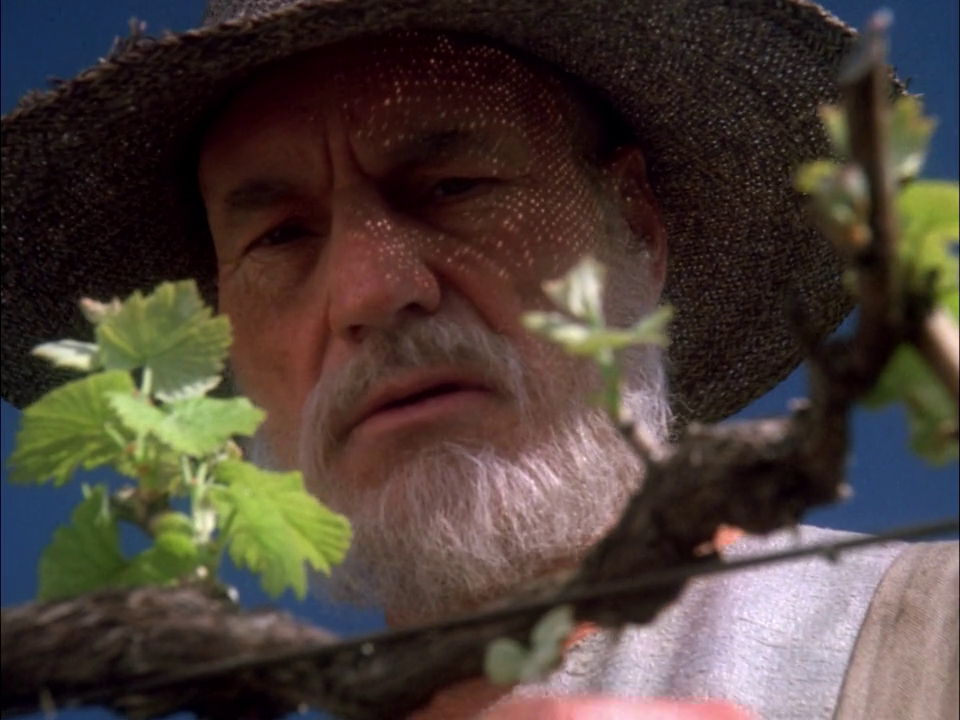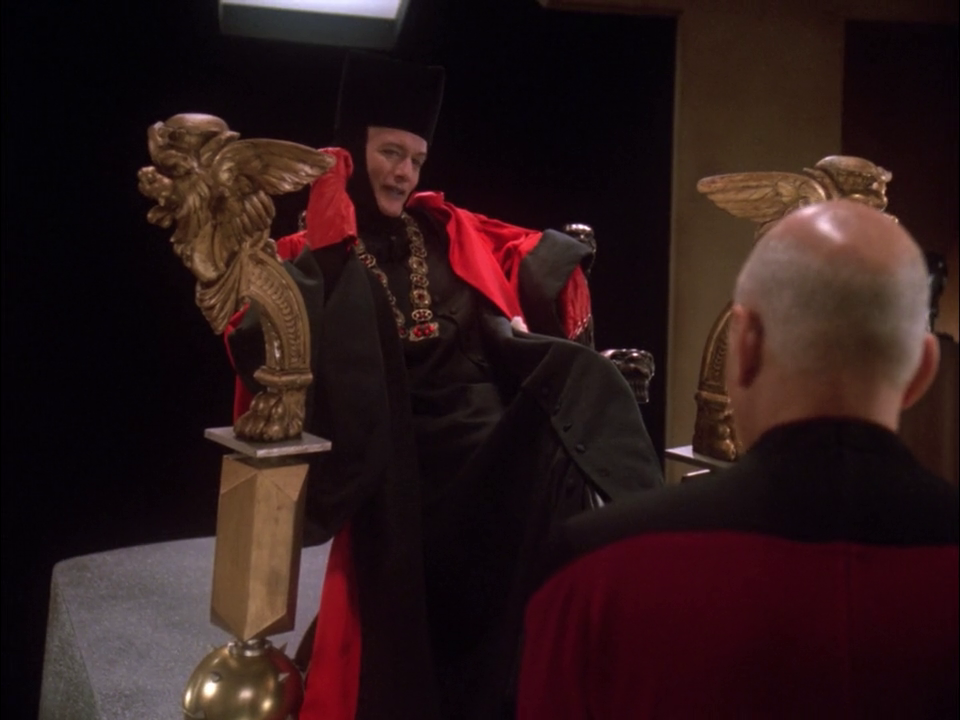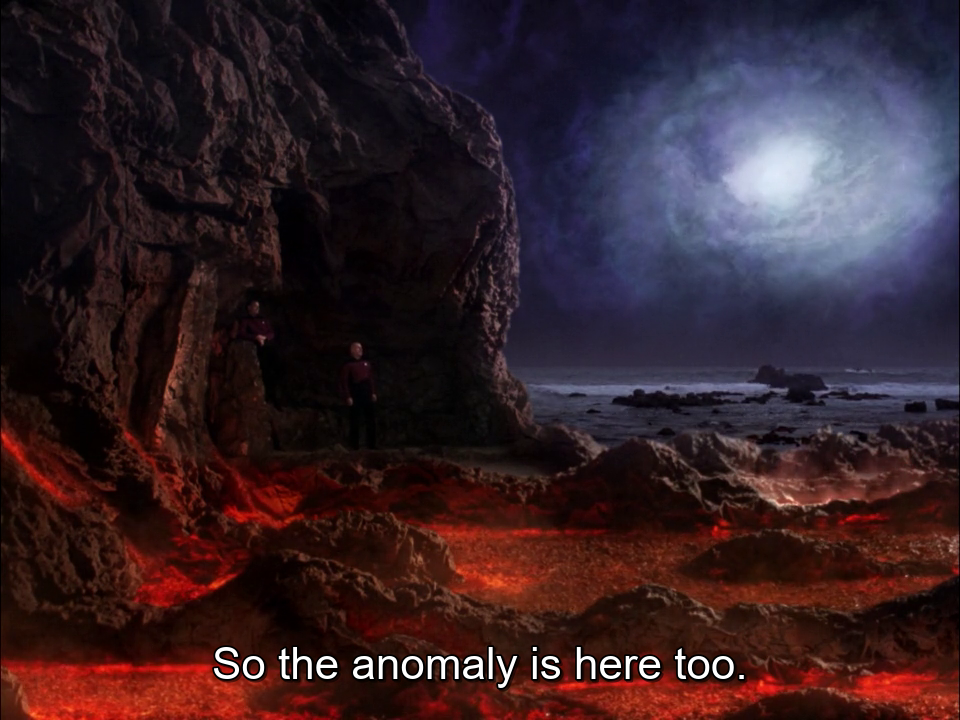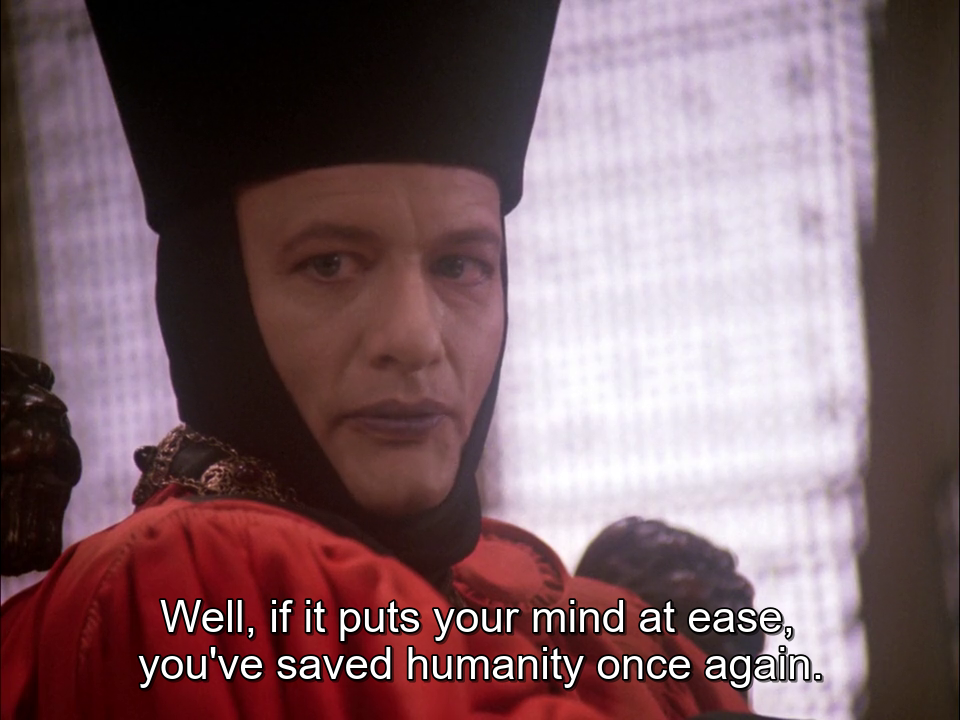Star Trek: The Next Generation received one of the best series finales of all time. A love letter to fans, it brought together the strongest storytelling elements of the series into one massive send-off for the crew. Let’s look at what makes All Good Things such a stellar finale.

Star Trek: The Next Generation is at its best when combining interesting science fiction plots with character pieces. Measure of a Man is considered one of the series best, and highlights this balance. A trial is held to determine if Commander Data, an android, is sentient and therefore afforded the same rights and freedoms as any living being. It’s a though provoking episode of philosophy and character investigation.
All Good Things introduces a very interesting science fiction concept. Captain Picard’s consciousness jumps between three time periods: past, present and future. The past takes him back to his first day on the Enterprise, just before the events of the series premiere. The present finds him in the same time period as the rest of season 7. The future brings Picard over twenty years forward to a time when he’s comfortably retired and working the family vineyard in France.
Time travel is nothing special in Star Trek. It’s happened before and it’ll happen again in future episodes. What makes it unique is two things. The first is that Picard’s mind is jumping through time rather than his physical being. The second is a strange spatial anomaly that follows his time jumps.

Let’s explore the first unique aspect. When Picard’s in the future, he’s in his older body and knows what’s happened in those missing twenty plus years. The same happens when he flashes to the past, he knows what is coming, but there’s no physical reflection of it. This makes the time travel all in Picard’s head. How his crew, his friends, react to him changes because of this. People react differently in each timeline, because of their relationship to Picard at the time. This brings a strong character element to the science fiction story.
The second unique aspect is the spatial anomaly. In the present timeline the Enterprise is ordered to investigate the newly discovered anomaly. In the past, he’s ordered to the same location and discovers the anomaly is significantly larger. In the future, he gathers his friends and discovers the anomaly isn’t there anymore. We’re given a strange situation for our crew to investigate, a mystery to solve.
What makes the spatial anomaly unique, is the way it functions. Q, who bookends the series with his appearance in premiere and finale, is responsible for Picard’s time travel. In each time period, Picard and crew scan the anomaly using a tachyon beam. In typical Trek science babble, these scans are tied to the flow of space and time. They’re supposed to discover the anomaly’s development and understand why it’s smaller in the future, but the inverse happens. They actually create the anomaly and cause it to grow in the past.
Three Picard’s run the same process in the same place, at three different times. The tachyon beams rupture time and space, creating the anomaly in the future. It then grows backwards through time. Q helps Picard understand the gravity of the situation by taking him back to the beginning of life on Earth. Billions of years in the past, the anomaly has grown to fill most of the galaxy. It’s a wonderful science fiction concept that the writers tied directly to Picard’s actions.

Q’s involvement takes the finale to the next level. All Good Things wisely focuses the more menacing aspects of Q’s personality. He mischievous more than malicious through the shows seven year run, but All Good Things balances the sides of him well. He’s not a villain, but Q feels dangerous. Picard doesn’t trust him, but knows Q’s involvement is important. Early in the finale, Q brings Picard back to the strange courtroom from the series premiere, and they have the following exchange.
Picard
We demonstrated to you that mankind had become peaceful and benevolent. You agreed and you let us go on our way. Now why am I standing here again?
Q
Oh, you’d like me to connect the dots for you, lead you from A to B to C, so that your puny mind could comprehend? How boring.
That line “A to B to C” beautiful demonstrates the whole plot of All Good Things. A-B-C is an artificial construct. There’s no natural reason for that progression. A doesn’t have to come before B or C, but people view it as a logical and natural part of their world. The anomaly challenges that limited view of reality. It doesn’t obey the laws of time people see as natural, and yet it existed.

Q
The trial never ended, Captain. We never reached a verdict. But now we have. You’re guilty.
Picard
Guilty of what?
Q
Of being inferior. Seven years ago, I said we’d be watching you, and we have been – hoping that your ape-like race would demonstrate *some* growth, give *some* indication that your minds had room for expansion. But what have we seen instead? You, worrying about Commander Riker’s career. Listening to Counselor Troi’s pedantic psychobabble. Indulging Data in his witless exploration of humanity.
Picard
We’ve journeyed to countless new worlds. We’ve contacted new species. We have expanded our understanding of the universe.
Q
In your own paltry, limited way. You have no *idea* how far you still have to go. But instead of using the last seven years to change and to grow, you have squandered them.
Q wants humanity to expand beyond its own narrow view of existence, and he helps Picard achieve that through his time jumps. Q’s not a villain, but he’s certainly not a force for good. He didn’t care if the anomaly destroyed the galaxy or universe. He would continue to exist regardless. What he wanted was to see if the people he’d come to know could rise to the challenge. It’s a philosophical investigation into how people think of reality, delivered by characters that are building upon the relationships established throughout the series run.
Q
You just don’t get it, do you, Jean-Luc? The trial never ends. We wanted to see if you had the ability to expand your minds and your horizons, and for one brief moment, you did.
Picard
When I realized the paradox.
Q
Exactly. For that one fraction of a second, you were open to options you had never considered. That is the exploration that awaits you. Not mapping stars and studying nebula, but charting the unknown possibilities of existence.
Q restores the crew of the Enterprise to life, and Picard returns to the present to rejoin them. The main plot is complete at this point. Picard has experienced an event unlike anything in human history. His experience challenged him to see the world differently. What would come next? This is where the show takes the concept of expanding your horizons to a brilliant final moment of humanity.
Picard has explained what happened to the crew, filling them in on everything Q did. Riker, Data, Troi, Crusher, Geordi and Worf are discussing it while playing poker. Poker games among this part of the crew were a series staple. They were an opportunity to show them bonding as friends outside of their work functions. Mid-conversation, the door chimes and Picard enters.
The game stops, but Picard sits down and joins them for the first time in the series run. Surrounded by the crew he’s spent several years leading, they’ve becomes more than coworkers. They’re family. For Picard as a character, acknowledging this as a leap equal to that of understanding the time paradox. With his family at his side, nothing they encounter in the depths of the unknown are beyond them.
Picard
So, five-card stud, nothing wild. And the sky’s the limit.

